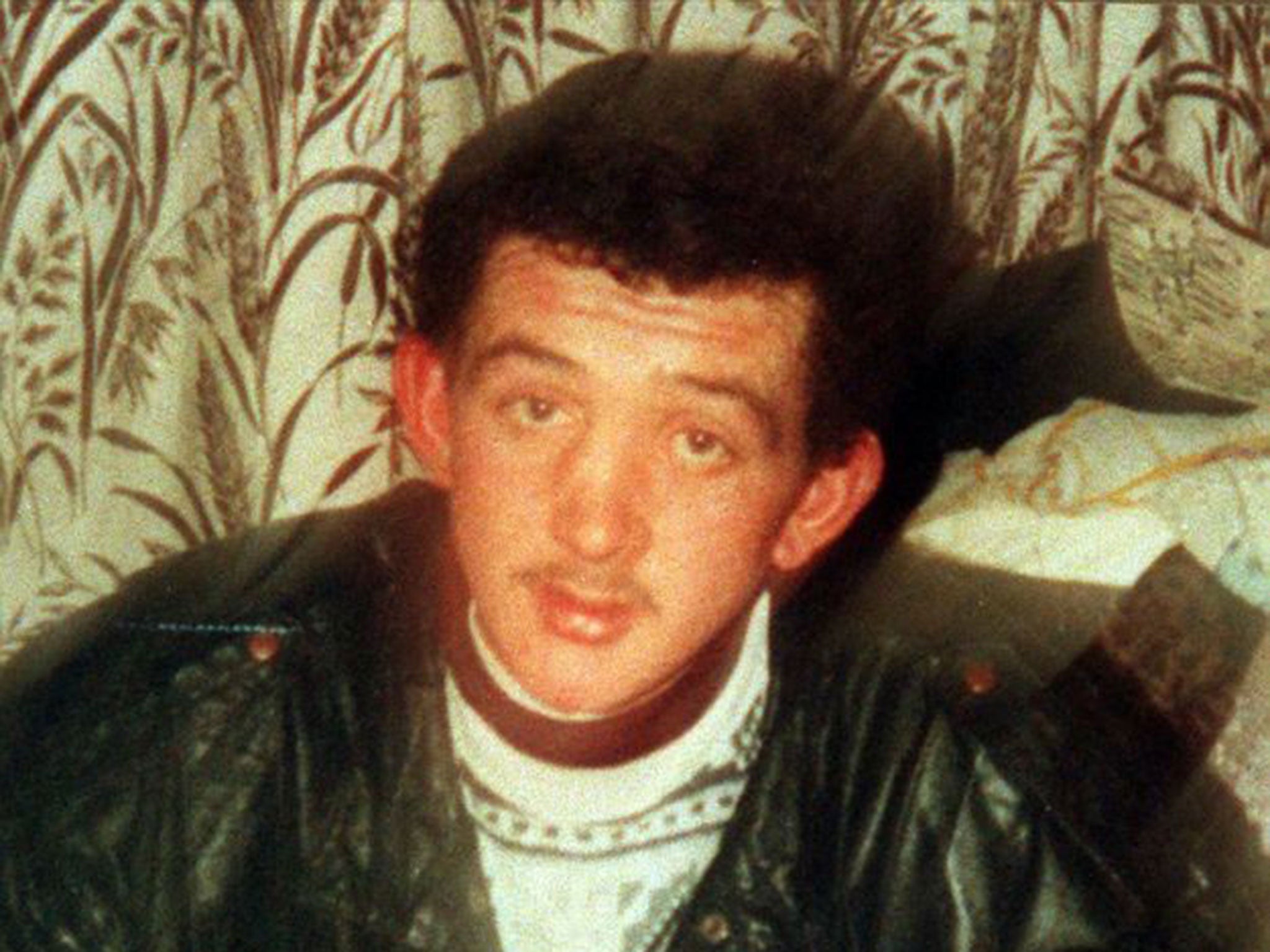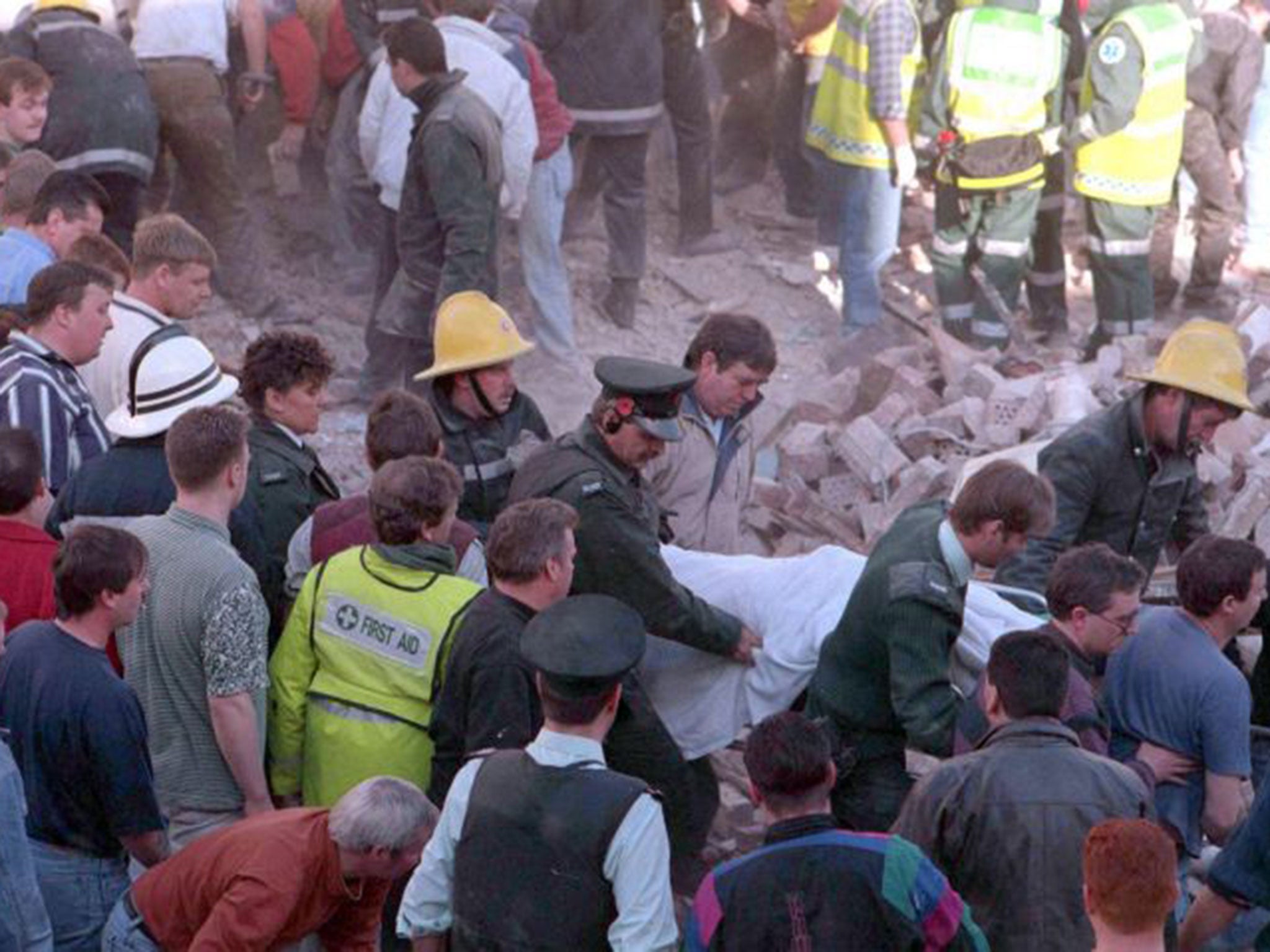Shankill Road bomb: IRA double-agent 'deliberately set device to explode prematurely'
Former IRA comrades claim man 'jarked' bomb to cause more civilian casualties and weaken those opposed to ceasefire

The ex-IRA man reported to have been a security force double-agent who tipped off his handlers about the October 1993 Shankill Road bombing is suspected by a number of former Belfast IRA comrades of having deliberately “jarked” the device so it exploded prematurely, to cause maximum civilian casualties and so weaken the “hawk” wing within the Provos opposed to an IRA ceasefire.
This means the Shankill bombing joins a list of Troubles incidents that are being investigated over alleged security force or service complicity by the Police Service of Northern Ireland (PSNI), or judicial reviews and inquests. These include the Omagh bombing in 1998, when the Real IRA slaughtered 29 people and two unborn twins and maimed hundreds, the loyalist “UVF” 1974 Dublin-Monaghan bombings which killed 34 and injured hundreds, Bloody Sunday, Bloody Friday, and claims about an IRA double-agent codenamed “Stakenife”, who is said to have murdered scores of people while working for the security forces.
Republicans in Belfast say the alleged informer almost fled last year only to be persuaded by a leading Sinn Fein politician to bluff his way against the allegations surfacing against him because Sinn Fein was desperate to avoid negative publicity about the extent of the IRA being penetrated by the security forces, ahead of last year’s general election.
Although the man oversaw a number of “successful” IRA operations to kill top loyalists, and on occasion security force members, questions have been asked about to what extent IRA members were set up for capture or worse.
IRA men Thomas “Bootsy” Begley and Sean Kelly walked into Frizzel’s packed fish mongers on the Shankill Road in October 1993 with orders to clear it of customers and then detonate an explosive device, aimed at loyalist paramilitaries believed to be meeting upstairs.

The device was reportedly a “directional” device, intended to explode upwards, bringing down the ceiling. But it reportedly exploded virtually as soon as Begley carried it to the counter, killing him and eight others and injuring Kelly as well as dozens of passersby. That “botched” bombing generated a series of loyalist revenge attacks in which 14 people were murdered and scores more injured.
The alleged informer “mastermind” – known by his security force code of “AA” – was reportedly unmasked by the IRA as early as perhaps 2002, shortly after the IRA raided the RUC base at Castlereagh in 2001 and stole and deciphered encrypted Special Branch files on IRA agents.
The informant came to hold a high-ranking position with the Provos, despite overseeing a series of IRA blunders leading up to the Shankill atrocity.
For instance, ex-IRA men have identified “AA” as having been directly involved in the murder of innocent father-of-three Henry Babington, a laboratory analyst, in north Belfast in October 1989. This still-unsolved murder caused the IRA huge embarrassment after it quickly emerged the two gunmen who shot the Catholic sailing enthusiast dead as he walked to work one morning had mistaken him for a “renegade Catholic” working for the security forces and led loyalist terrorists to target IRA members.
This case is believed to be one of nearly 60 being investigated by the Police Ombudsman over allegations, similar to the latest Shankill claims, that branches of the security forces or service were informed by agents of impending attacks but allowed some to go ahead. As with the later Shankill bombing, there was an internal IRA investigation but in neither case was “AA’s” alleged role uncovered by the IRA’s Internal Security department.
But “AA” is said to have confessed recently that he had had possession of the bomb used in the Shankill Road in October 1993 before it was handed over to Begley and Kelly.
Ex-IRA prisoners say they strongly believe “AA” was given the go-ahead by his handlers to “jark” the device. Asked how this could have been done, one former prisoner said: “It would have been easily booby-trapped. Those carrying it would not have known the timer could have been altered. They would have been given 45 seconds to clear the premises and then detonate the device, giving them time to also get out, but not those upstairs who were the target. But, if it was a time-lag switch, it could have been secretly adjusted, without a doubt.”
Another ex-prisoner said, “Not all IRA men supported the peace process, a great many hated it. This could have been allowed to go off, it is speculated, just like Omagh, to undermine those hostile to peace. And the slaughter on the road would have led a lot of men and women volunteers to personally reconsider their own roles. It was a disaster for the ‘army’.”
One of the most surprising elements of the story is why the IRA allowed “AA” to continue living within his community even after discovering in 2002 that he was an informant. There are suggestions that it wanted to keep his treachery secret to avoid the embarrassing revelation of how fully the organisation had been infiltrated by the security services.
Reports over the years suggested that the IRA had been unable to decipher the Special Branch documents, but it can now be revealed that – after recruiting a former prisoner turned top academic, who in turn recruited a small team of helpers – the IRA did indeed establish the extent to which it had been penetrated by the British state.
One ex-Belfast prisoner said: “This will be totally devastating for the IRA’s credibility. It raises massive questions for the state, as to what extent it allowed its own citizens to die, who made those decisions and can they ever be made amenable.
“But for the IRA the questions will now start to re-emerge as to what extent volunteers and supporters were sacrificed by agents in the ranks, and what has the IRA done to rectify this, if anything?”
Join our commenting forum
Join thought-provoking conversations, follow other Independent readers and see their replies
Comments
Bookmark popover
Removed from bookmarks